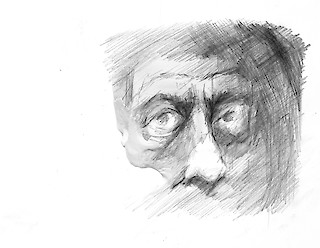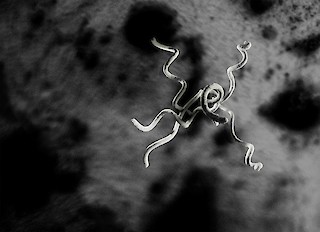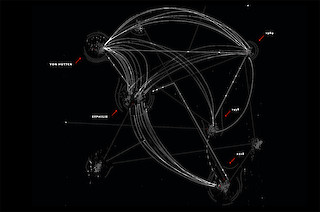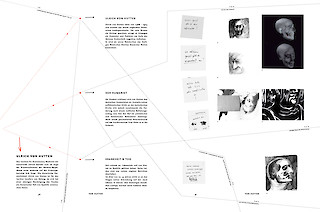Three chapters from the illustrated book Topography of a Process. Scientific Research from a Designer’s View trace the story of excavation works on the island of Ufenau. The restoration of a chapel in 1958 led to the discovery of human remains which were then attributed to syphilis-stricken reformer and poet Ulrich von Hutten. Despite scientific evidence to the contrary, the anthropologist in charge stuck to this belief – until a second skeleton was discovered in 1969. C14 analyses from 2018 dated the syphilitic skeleton to before 1493, which suddenly turned «Hutten» into an intriguing case of medical history. Could this be proof that syphilis may not have come to Europe with Columbus, after all? What evidence exactly suggested that it was not the reformer? Why was the case pursued further, despite negative results? Do the findings disprove the general theory about the spread of syphilis? The complexity and apparent randomness of this network of information and hypotheses is at the centre of this project which combines scientific data with its own studies and visual research.


«The book «Topography of a Process» looks at an example of scientific research where hypotheses are put forward and discarded again.»
Janina Balsiger’s project reflects on scientific processes through a case study which, by way of the popular island of Ufenau in Lake Zurich and the alleged remains of Ulrich von Hutten, links local history with world history, and which concerns the science of history as well as anthropology and evolutionary medicine – each with their own specific research culture. Hutten’s final days, turned into a famous cycle of poems by C. F. Meyer, are discussed anew here. Cracks and uncertainties in the scientific research process emerge, when hypotheses are proposed and retracted, as new objects are found, new visualisations created or new methods of measurements applied. The second part of the book documents Janina’s own creative research process which, in its meandering way, mirrors the scientific approach. In her attractively designed book, Janina has playfully, yet eye-openingly exposed the manifold possibilities of interpreting epistemic images and the fickle nature of scientific facts. Thus, in the second part of the book, the microscopic image of a syphilitic bone reveals itself as a photograph of a coffee cup. And the identification of the second skeleton as belonging to a female leads to the logical yet absurd hypothesis that Hutten may in fact have been a woman. Janina’s work is a piece of Artistic Research. Using wit and intelligence, she questions her own field of study as well as the subject areas of those who commissioned her.
This work was conducted in cooperation with the Institute of Evolutionary Medicine IEM, University of Zurich.

